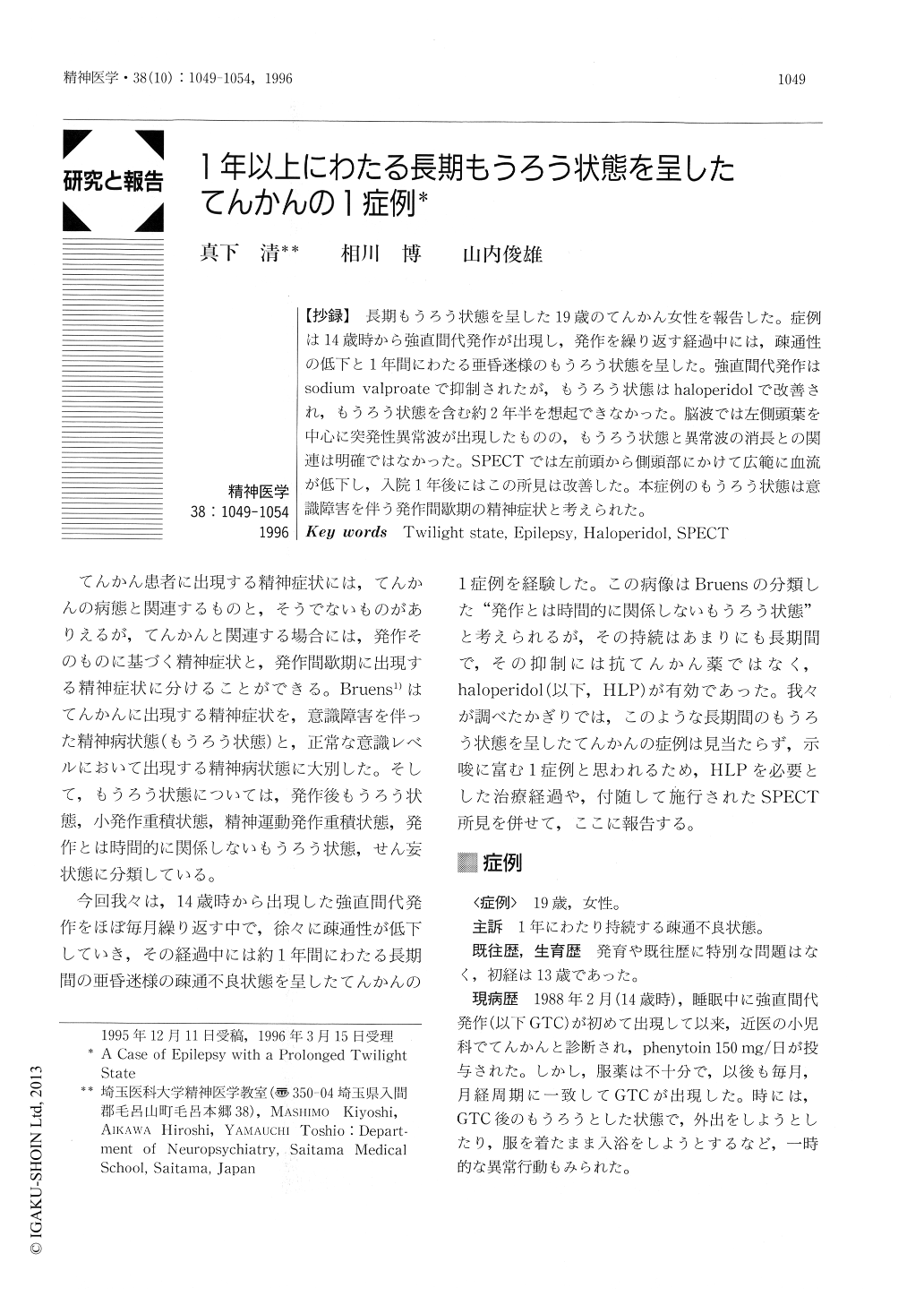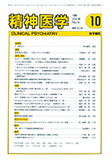Japanese
English
- 有料閲覧
- Abstract 文献概要
- 1ページ目 Look Inside
【抄録】長期もうろう状態を呈した19歳のてんかん女性を報告した。症例は14歳時から強直間代発作が出現し,発作を繰り返す経過中には,疎通性の低下と1年間にわたる亜昏迷様のもうろう状態を呈した。強直間代発作はsodium valproateで抑制されたが,もうろう状態はhaloperidolで改善され,もうろう状態を含む約2年半を想起できなかった。脳波では左側頭葉を中心に突発性異常波が出現したものの,もうろう状態と異常波の消長との関連は明確ではなかった。SPECTでは左前頭から側頭部にかけて広範に血流が低下し,入院1年後にはこの所見は改善した。本症例のもうろう状態は意識障害を伴う発作間歇期の精神症状と考えられた。
A case of epilepsy with a prolonged twilight state was reported. A 19-year-old female had demonstrated periodic generalized tonic-clonic convulsion (GTC) since the age of 14. She gradually developed a state of poor contact along with recurrence of GTCs, and she entered a twilight state showing a stuporous condition by the age of 17. Even though the condition showed a slight improvement after each GTC, she basically remained mutistic and demonstrated poor rapport for long periods. This state persisted despite seizure control with sodium valproate.
This prolonged twilight state was finally improved after a one-year interval by medication with haloperidol. However, the patient can not recall anything of the two and half years including the twilight state.
Serial EEGs showed paroxysms in the left temporal region, but no specific changes were observed prior to or during the twilight state. 1231-IMP SPECT showed global hypoperfusion in the left anterior and temporal lobes, but this finding improved one year after recovery from the twilight state.
The patient is now well and taking both anticonvulsants and haloperidol, although occasional complex partial seizures do occur. The psychotic state with disturbance of consciousness in this case was considered to be an epileptic twilight state not chronologically related to the seizures.

Copyright © 1996, Igaku-Shoin Ltd. All rights reserved.


